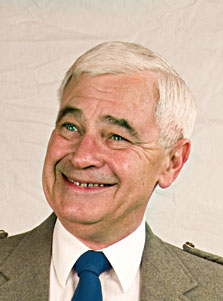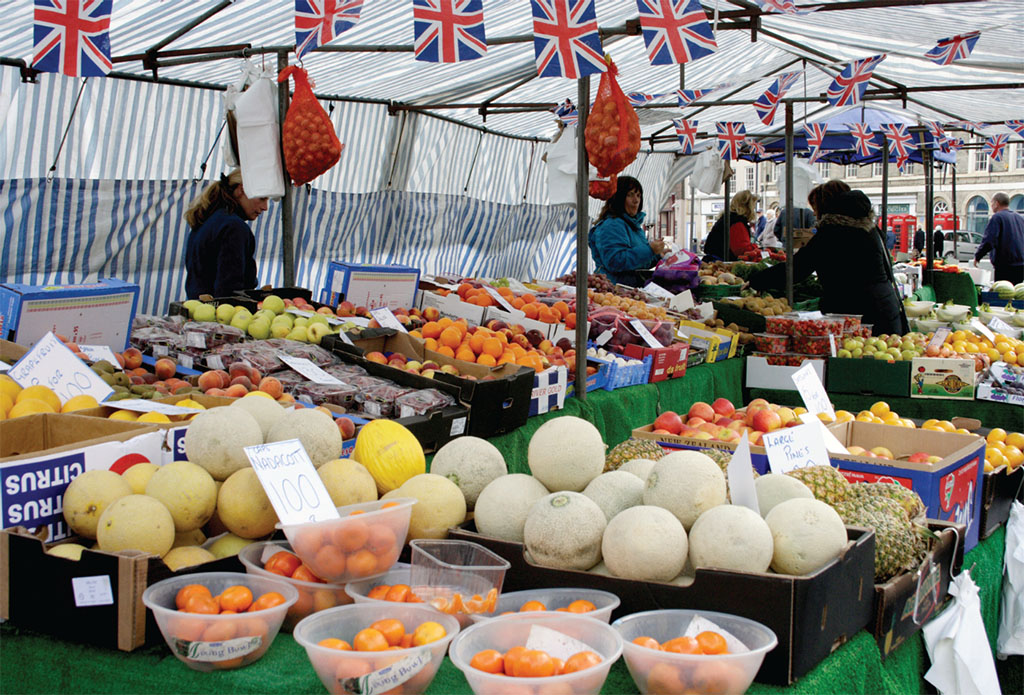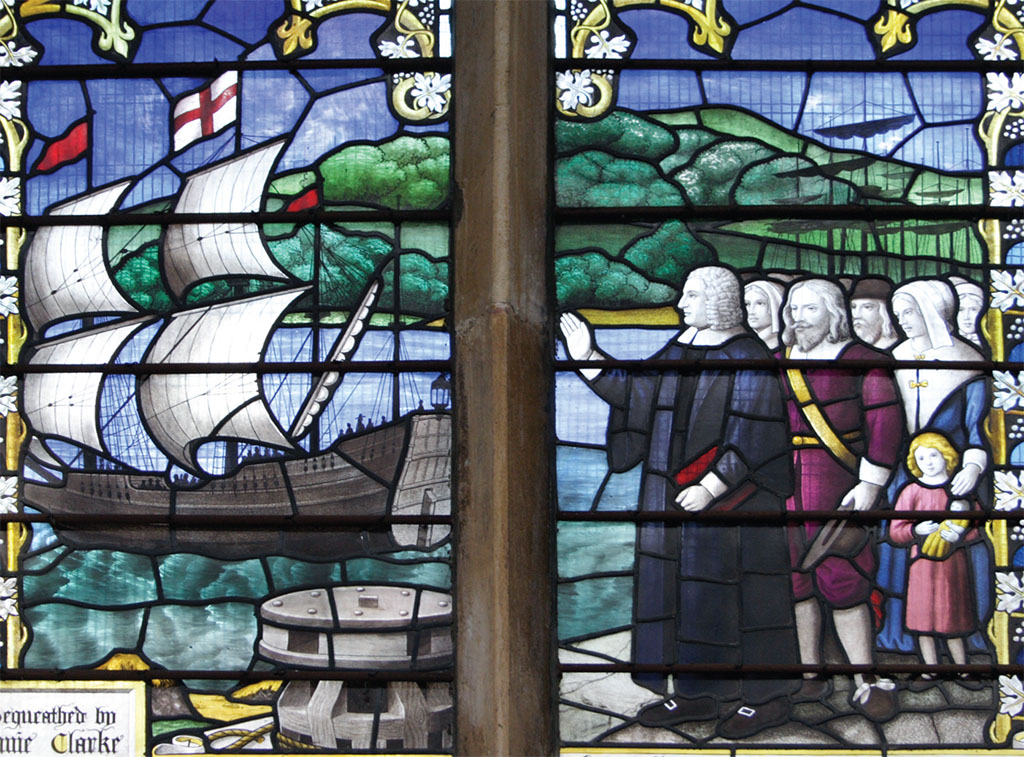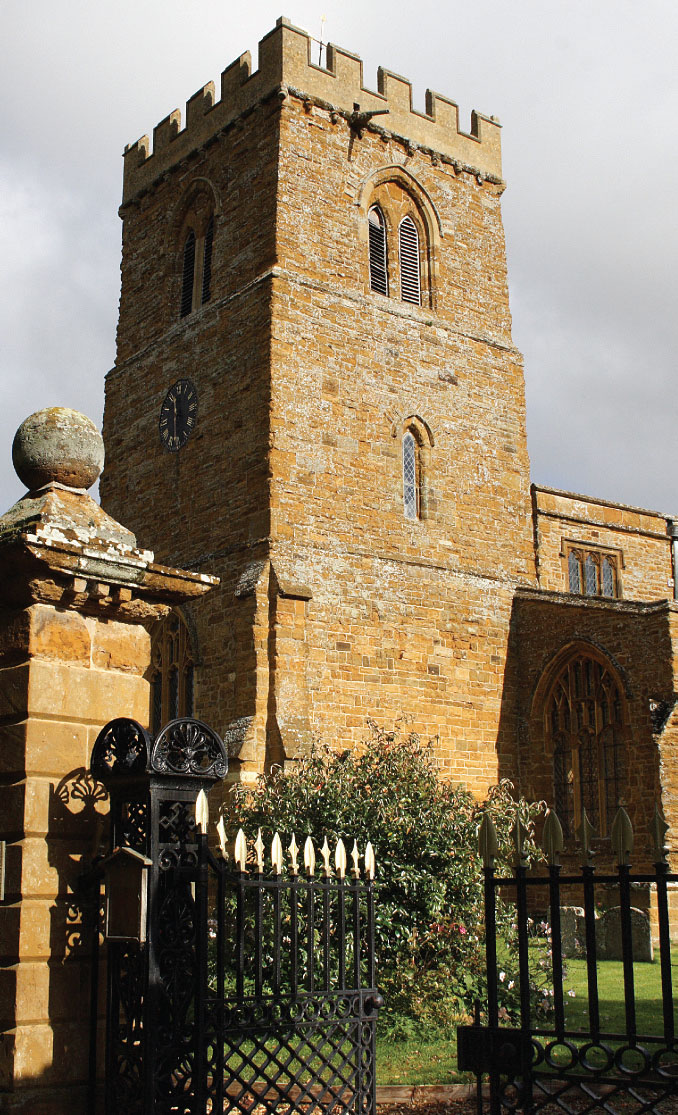
[caption id="TravelswithMySisterLordHelpUs_img1" align="aligncenter" width="223"]

FOR A FORTNIGHT, the seemingly permanent deluge of rain across Britain this year blessedly held itself at bay while I rambled through England on my annual season-of-mellow-fruitfulness tour in search of stories and photos. No, it’s never quite that accidental.
She’d been threatening to do it for years. This autumn she did. My sister Sara came along. We rendezvoused at Heathrow and, since I couldn’t shake her there, we were off to the Thames Valley. The pretty, modest market town of Wallingford is the real-life setting of Causton, epicenter of the fictional county of Midsomer, scene of Midsomer Murders. It seems that after 15 years on ITV this placid corner of Oxfordshire has the second-highest murder rate in the world—bested only by Cabot Cove, Maine. Since sister Sara is from Cabot Cove, it seemed an appropriate place to begin our adventures. You can read the story a few pages on.
After routinely hanging about Britain for more than 30 years now, I rather take things for granted, such as real ale in the pub, back bacon for breakfast, baskets of gorgeous hanging flowers decorating the town square and the plethora of CCTV cameras capturing my every move. While Sara had been to Great Britain a couple of times previously, the last time was nigh onto 25 years ago. When she was asked if things have changed she could only reply, “I don’t remember.” The advantage for me with her company was seeing our green and pleasant land through fresh, enthusiastic eyes.
It’s easy to forget that everyone doesn’t understand VAT—that built-in 20 percent sales tax on everything—or the red L on the back of cars that indicates a “learner,” for instance. And, “Why do they eat peas with everything?”
WE HEADED NORTHEAST THROUGH Oxford, Northampton and Peterborough. Across the Peterborough Levels into Lincolnshire lay mile after mile of fertile market gardens, huge fields of potatoes, cabbage, Brussel sprouts, leeks and such. England’s vast vegetable garden is interrupted by the famous flowering bulb fields at Spalding, rather dormant at this time of year.
We stopped in Boston, where Sara pottered about the bustling market and I shot photos of St. Botolph’s Church, the Boston Stump, where in the early 1600s the popular Puritan pastor, John Cotton, filled the huge parish church. In 1630 he preached a sermon of farewell to 400 people who joined John Winthrop in a flotilla headed for Massachusetts Bay to found “the city on the hill.” Cotton himself followed in 1633, and became the architect of New England Congregationalism. Ultimately, a quarter of the prosperous port’s townsfolk made their way to the new Boston. Stained-glass windows in the church commemorate Cotton and the exodus.
[caption id="TravelswithMySisterLordHelpUs_img2" align="aligncenter" width="1024"]

My destination up on the Lincolnshire coast was the seaside resort of Skegness. Skegness? was the general reaction when I mentioned that it was on our itinerary, but that’s another story. Of course, October is the “end of the season” for any seaside holiday spot. It was lively enough that evening though, when we ate fish and chips at Harvey’s on the oceanfront and listened to an hour or so of the weekly karaoke evening. All right, I confess, I sang “Sweet Caroline” and “Unchained Melody.”
Inland across the gentle Lincolnshire Wolds some 40 miles, the ancient cathedral city of Lincoln is a more archetypal destination. Magnificent Lincoln Cathedral (the third-largest in England) and William the Conqueror’s Lincoln Castle, begun in 1068, crown a promontory above the modern city on the river and the flat fields beyond. I’ve always liked Lincoln. It’s a just-out-of-the-way-enough destination so that it receives few American visitors, but I highly commend its historic charms for readers who’ve seen the more common visitor sights.
I had a couple of days to make it the 100 miles or so to Leicester, which invited the kind of unexpected adventure I love. We ended up visiting Southwell Workhouse, the “new” way of providing social relief for the elderly poor, indigent and indolent. Southwell’s 1848 union of parish relief would hardly have been a comfortable way of life, but it offered medical care, community and a much better diet than many folk enjoyed in those days. Subsequently, Southwell became the model of Union Workhouses that sprang up across England in the mid-Victorian years.
[caption id="TravelswithMySisterLordHelpUs_img3" align="aligncenter" width="1024"]

HEADING WEST THROUGH Nottingham and Derby, I turned north toward the Peak District. We did a run up to beautiful Buxton just for the incredible scenic vistas and returned for the night to Ashbourne and a stay at The Station Hotel. The railroad is long gone from Ashbourne, but the circa-1900 railway hotel still stands, and its young proprietor has lovingly created an Edwardian flavor and atmosphere throughout.
It always gives me great satisfaction when British Heritage can introduce readers to new destinations. After reading Jim Hargan’s story on the beers of Burton, I determined that a visit to the National Brewery Center in Burton-on-Trent was a must-see. Yes, well, it is a great visit, and I can attest that the original-recipe Bass ale brewed on the premises is a clear cut above anything available commercially under that label.
Leicester. The location of the bones of King Richard III is one of the great mysteries of history. This is the only anointed king of England since the Norman Conquest he who is not buried in a royal tomb and whose resting place is unknown. Now, the 500-year-old mystery has been solved. I spent a morning with the archaeological team at the University of Leicester that found the royal remains under a car park in this modern industrial city. Their excitement was palpable and understandable; this was a genuine needle-in-a-haystack find, and they struck it on the first reach.
I have no doubt: They’ve got him. A generation ago, the evidence would have spoken for itself. But there is a difference between evidence and proof, and today DNA testing can provide the proof. Alas, it will take several months to complete the testing necessary to confirm the evidence. I’ll tell the whole story in British Heritage, of course, but like the anxious archaeological team in Leicester, we’ll hold off an issue or two until the story is complete.
VIA KENILWORTH CASTLE, a little church near Althorp where George Washington’s great, great grandfather is buried and Stowe Landscape Garden, Sara and I made our way toward London.
After a morning at the Victoria&Albert, we hoofed from there to Bloomsbury. I never did see Sandra Lawrence’s allotment garden, though we did have a nice visit together at The Crown pub and dinner at The Punjab. The next day, James Graham and his amiable wife Catherine hosted us to lunch at Chez Graham in East Croydon. I told him not to fuss, but that was a useless exercise. And James is, after all, a noted wine writer. Four courses took us through a Sauvignon Blanc and delicious claret, then sherry with Wensleydale and his Earl Grey tea cake, and port with the cheese. We left lunch about five.
Sara had a great time, though not quite what she’d have had on a coach tour. She’ll dine out on travel tales for a year back in Cabot Cove. I did have to warn her, of course, that she’d want to talk about it far more than folk will want to listen. You may have discovered that reality yourself. I came back rather more worn than usual. After all, I couldn’t really take an afternoon of down time and leave her rummaging around the hotel. Still, I learned again what I shouldn’t take for granted—like the fact that the English often drink instant coffee and have never heard of half-and-half. Maybe next time, you’d like to come along.
[caption id="TravelswithMySisterLordHelpUs_img4" align="aligncenter" width="678"]






Comments